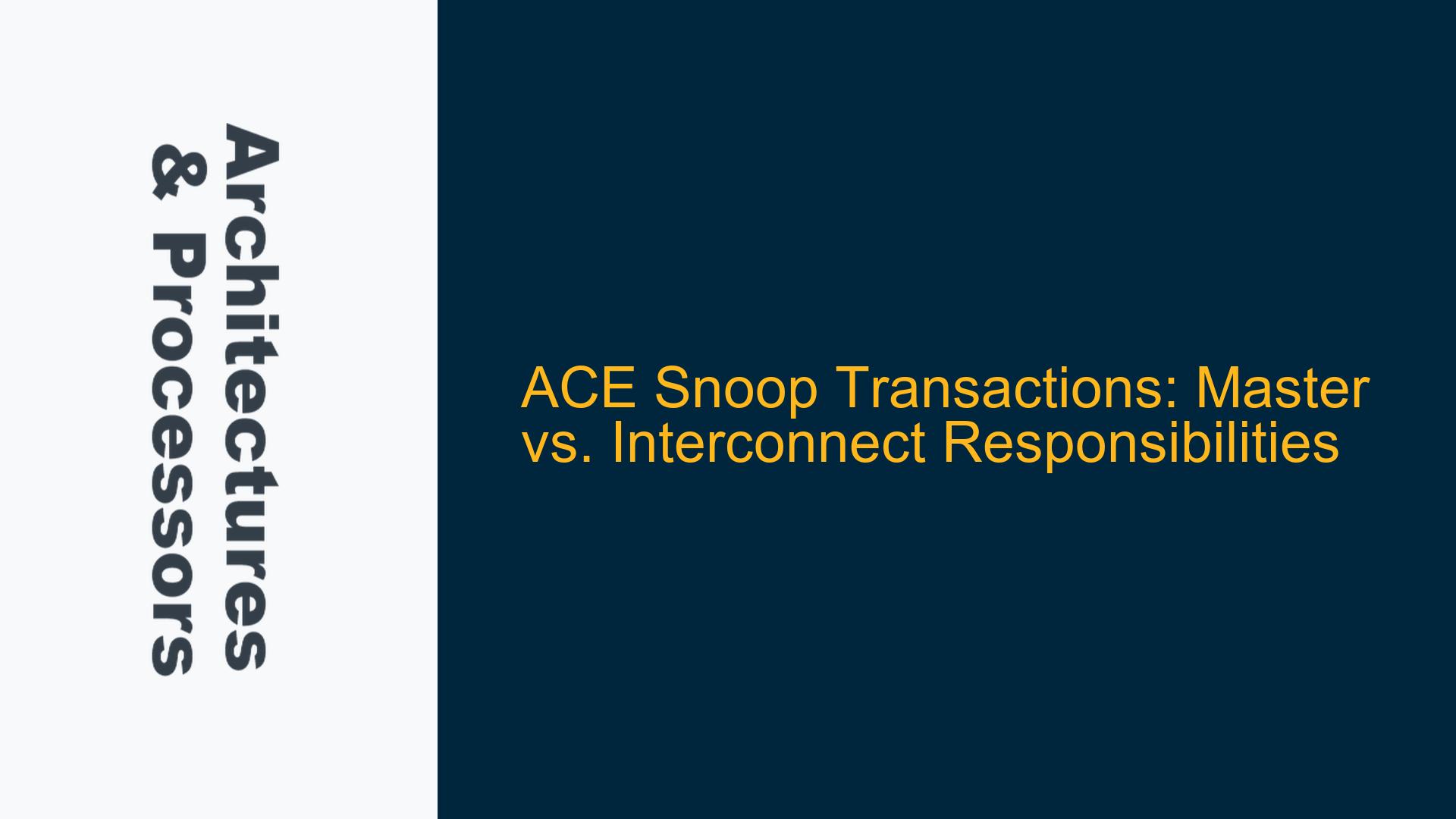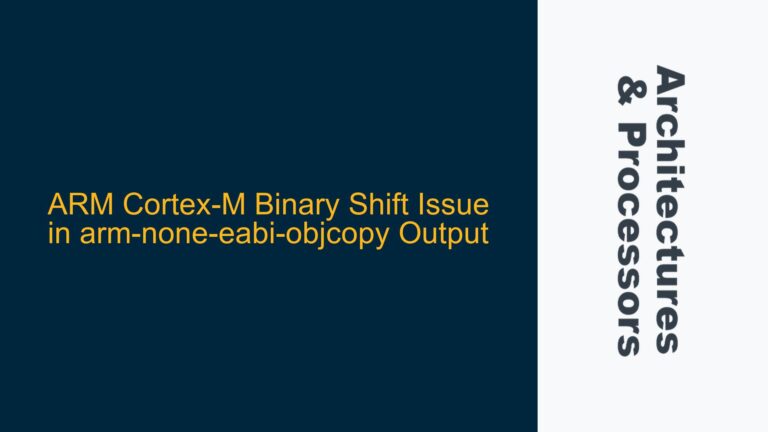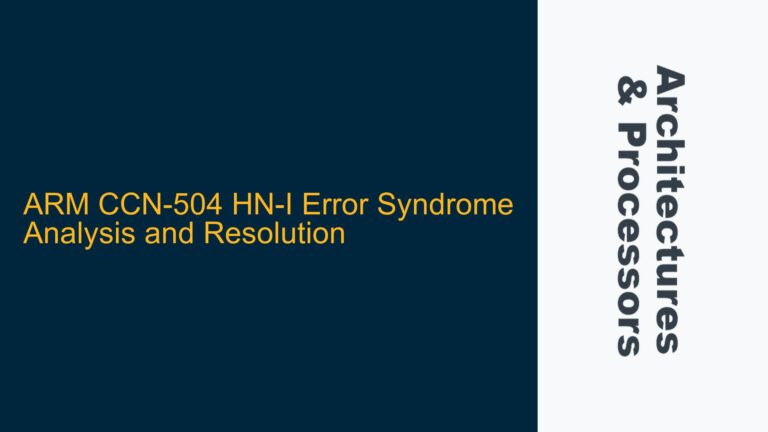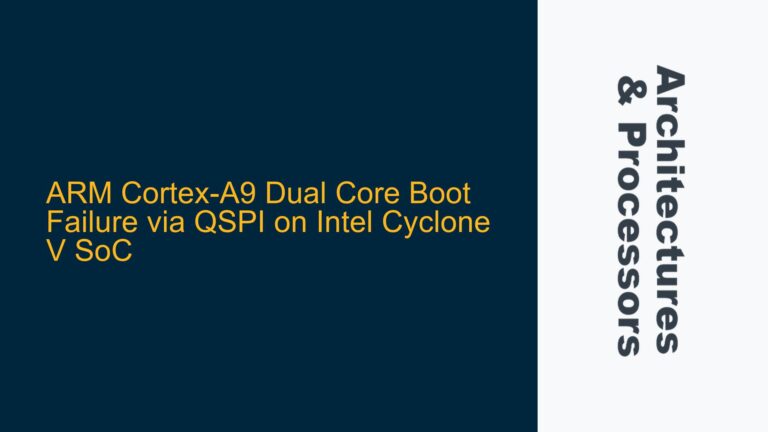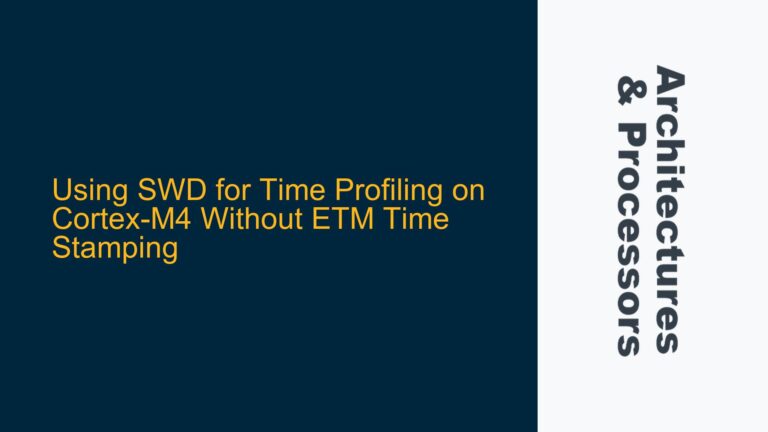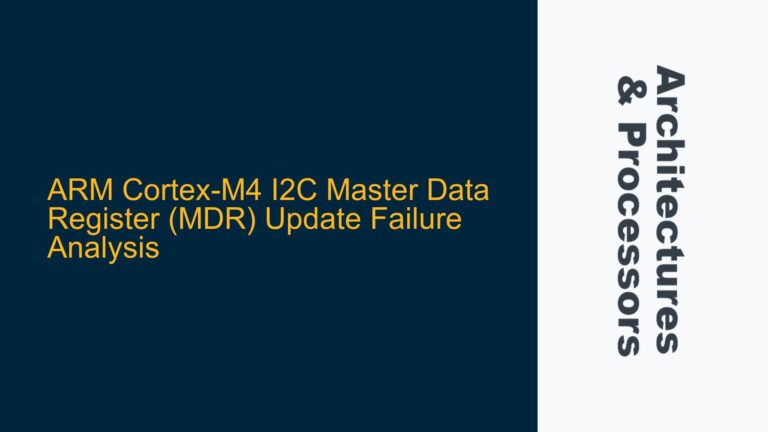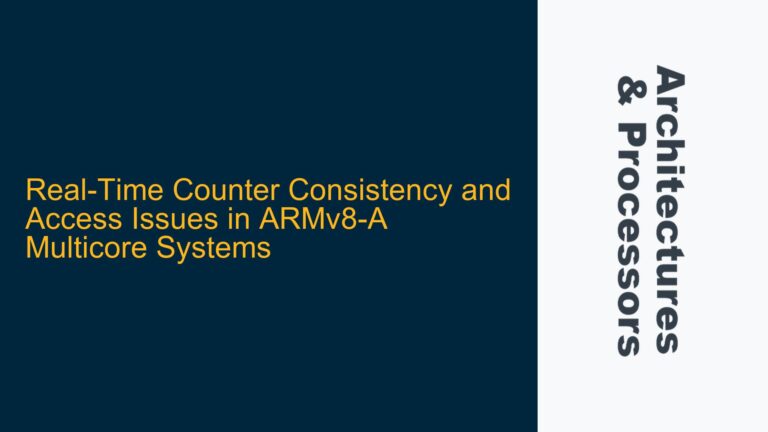ACE Snoop Transactions and Cache Coherency in ARM-Based SoCs
In ARM-based SoCs, the Advanced Extensible Interface (AXI) Coherency Extensions (ACE) protocol plays a critical role in maintaining cache coherency across multiple masters and shared memory regions. ACE snoop transactions are a fundamental mechanism for ensuring that all caches in the system have a consistent view of memory. However, the responsibilities for initiating and managing these snoop transactions can be a source of confusion, particularly when distinguishing between the roles of software, hardware masters, and the interconnect. This post delves into the intricacies of ACE snoop transactions, clarifying the roles of each component and providing actionable insights for design and verification engineers.
Software-Driven Cache Updates and ACE Snoop Transactions
A common misconception is that low-level software or drivers can directly initiate ACE snoop transactions to update caches. In reality, software does not have direct control over snoop transactions. Instead, software influences cache coherency by configuring memory attributes and enabling hardware coherency mechanisms. For example, software can mark a memory region as shareable, which signals to the hardware that the region may be accessed by multiple masters and requires coherency management.
When software performs a read or write operation to a shareable memory region, the hardware coherency mechanisms take over. The ACE protocol defines how the interconnect and masters interact to maintain coherency. The interconnect monitors transactions and generates snoop requests as needed to ensure that all caches have the most up-to-date data. This process is entirely hardware-driven, with software only providing the initial configuration.
The key takeaway is that software indirectly influences snoop transactions by configuring memory attributes and enabling coherency, but it does not directly initiate snoops. This distinction is crucial for understanding the division of responsibilities between software and hardware in maintaining cache coherency.
Interconnect-Generated ACE Snoop Transactions
The ACE interconnect is responsible for generating snoop transactions in response to memory accesses initiated by masters. When a master issues a read or write request to a shareable memory region, the interconnect evaluates the request and determines whether snoop transactions are necessary. For example, if a master requests data that may be cached by another master, the interconnect will issue snoop requests to ensure that the requesting master receives the most up-to-date data.
The interconnect’s ability to generate snoop transactions is a hardware feature and does not rely on software intervention. However, some ACE interconnects may include additional software-configurable features that allow for more granular control over snoop behavior. For instance, an interconnect might provide registers that software can program to influence snoop policies or priorities. These features are optional and not required by the ACE protocol.
It is important to note that the interconnect’s snoop generation logic must adhere to the ACE protocol specifications. This includes correctly handling transaction types, ensuring proper ordering of snoop responses, and managing dependencies between transactions. Any deviation from the protocol can lead to coherency violations and system instability.
Debugging and Optimizing ACE Snoop Transactions
Debugging and optimizing ACE snoop transactions requires a deep understanding of the ACE protocol and the specific implementation of the interconnect and masters. The following steps provide a structured approach to identifying and resolving issues related to ACE snoop transactions.
First, verify that software is correctly configuring memory attributes and enabling hardware coherency. This includes ensuring that shareable memory regions are properly marked and that coherency settings are enabled in the relevant control registers. Any misconfiguration at this stage can prevent the interconnect from generating snoop transactions when needed.
Next, analyze the transaction sequences generated by masters and the corresponding snoop transactions issued by the interconnect. This can be done using simulation tools or hardware debuggers that support ACE protocol tracing. Look for discrepancies between the expected and observed behavior, such as missing snoop transactions or incorrect snoop responses.
If issues are identified, review the interconnect’s snoop generation logic and ensure that it complies with the ACE protocol specifications. Pay particular attention to corner cases, such as concurrent accesses to the same memory region by multiple masters or transactions that cross cache line boundaries. These scenarios can expose subtle bugs in the snoop generation logic.
Finally, optimize the snoop transaction flow to minimize latency and maximize system performance. This may involve tuning the interconnect’s snoop policies, adjusting the priorities of snoop transactions, or modifying the cache line sizes used by masters. Performance analysis tools can help identify bottlenecks and guide optimization efforts.
By following these steps, engineers can effectively debug and optimize ACE snoop transactions, ensuring robust cache coherency and optimal system performance in ARM-based SoCs.
Conclusion
ACE snoop transactions are a critical component of cache coherency in ARM-based SoCs, but their implementation and management can be complex. Understanding the roles of software, hardware masters, and the interconnect is essential for designing and verifying systems that maintain coherency while delivering high performance. By systematically analyzing transaction sequences, debugging protocol compliance issues, and optimizing snoop policies, engineers can ensure that their systems meet the demanding requirements of modern applications.
